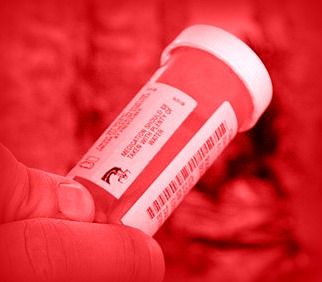Prevent Chocolate Drug
Interactions
Use this search box to find the info you're looking for!


Love chocolate?
Aware that unwanted chocolate drug interactions can occur?
Mix some medications with it and you may have a serious problem!
Yes, your favorite treat can be counterproductive. Why?
Because chocolate contains caffeine, tyramine and fat.
These can interfere with some medications.
A few experts think adding chocolate flavoring to medications may make them less effective.
Your doctor may want you to eat less or avoid chocolate. It can be tough to give it up.
But you may benefit more from less cocoa.
Do you take any of these?
The following information is presented solely to make you aware of potential problems. It's not intended to take the place of medical advice. Always consult your health care provider before taking any action.
Chocolate Drug Interactions: Culprit Caffeine
Eat the recommended one ounce of dark chocolate a day? Then you'll only consume from 5 to 35 grams of caffeine.
Probably a safe amount of caffeine for most people...
But if you're taking certain prescription medications, it may be enough to cause an undesirable drug interaction.
A consumer update issued by the Food and Drug Administration in 2009 warned that the caffeine in chocolate can reduce the effect of these prescription sleep aids...
- Ambien, Ambien CR (zolpidem tartrate)
- Butisol sodium
- Carbrital (pentobarbital and carbromal)
- Dalmane (flurazepam hydrochloride)
- Doral (quazepam)
- Halcion (triazolam)
- Lunesta (eszopiclone)
- Placidyl (ethchlorvynol)
- Prosom (estazolam)
- Restoril (temazepam)
- Rozerem (ramelteon)
- Seconal (secobarbital sodium)
- Sonata (zaleplon)
Other drugs that could potentially interact with the caffeine in chocolate are...
- Ciprofloxacin
- Quillivant
- Norfloxacin
- Adderall
- Aminophylline
- Vyvanse
- Daytrana
- Theophylline
- Concerta
- Ritalin
- Methylin
- Lithium
- Dexedrine
- Riluzole
- Metadate
Do you suffer from COPD? Some of your medications may be affected by the caffeine content of chocolate too.
If you take any of these drugs, your doctor may want you to limit or even avoid eating chocolate.
The caffeine may amplify the side effects of the drugs. Or the drugs may increase the effects of the caffeine.
But wait there's more...
Tyramine
Tyramine is a compound found in foods like chocolate. It helps your body control blood pressure.
But if your taking monoamine oxidase inhibitors (MAOIs) like ...
- Nardil
- Parnate
- Marplan
- Emsam
You need to be on a low-tyramine diet, according to Daniel K. Hall-Flavin, M.D., Mayo Clinic psychiatrist.
He states that if you include too much tyramine in your diet while you're taking MAOIs, you may experience a dangerous increase in blood pressure. Eventually, excess tyramine in your blood could trigger a stroke.
A serious danger but not the last thing to keep in mind. There's
one more chocolate component that may cause undesired drug
interactions.
Fat
There's a lot of it in chocolate. Cocoa butter is a reasonably healthy fat.
But if you take one of these medications for lowering blood cholesterol levels...
- Atorvastatin
- Ezetimibe
- Rosuvastatin
- Gemifibrozil
- Lovastatin
- Pravastatin
- Fluvastatin
- Colestipol
- Colesevelam
- Fenofibrate
- Simvastatin
- Cholestyramine
- Nicotinic acid
Eat chocolate and you may be working against yourself. Probably not a good idea to ingest so much fat. Check with your doctor.
Tell your doctor about your dark chocolate habit. Be aware of what's in
there. Ban the bar, if you must, to avoid unpleasant drug interactions.
Return to Effects of Chocolate
Return to Health Benefits of Dark Chocolate Home Page
New! Comments
Feeling the need to send some feedback? Leave me a comment in the box below.